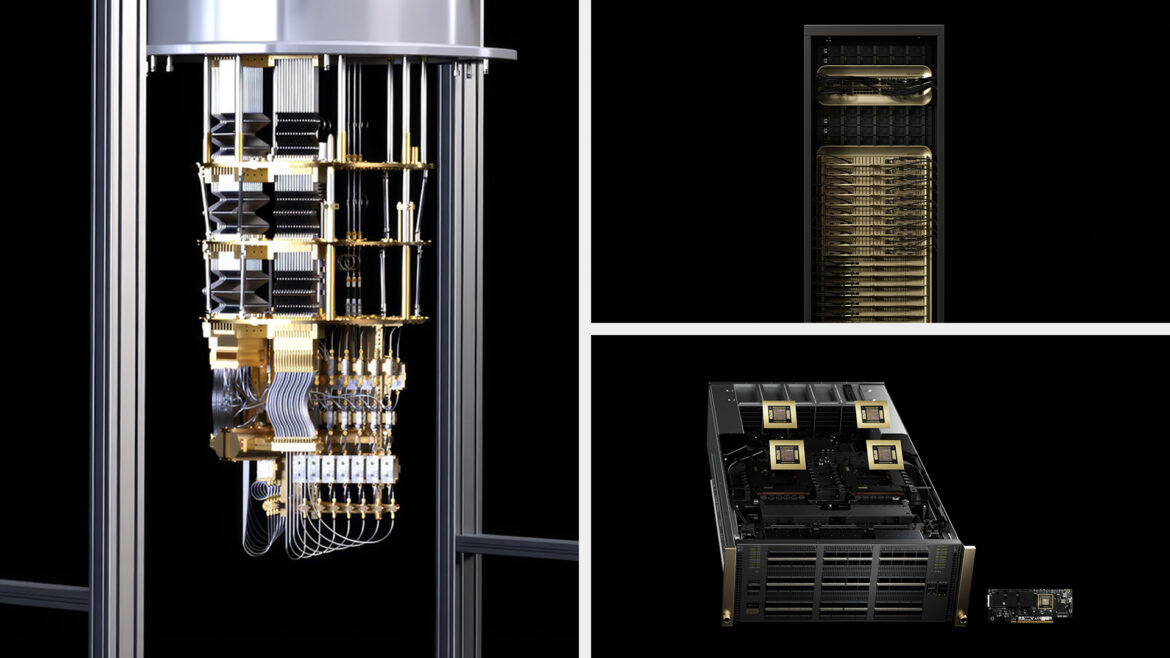Japan’s RIKEN research institute is set to significantly expand its scientific computing capabilities with two new supercomputers powered by NVIDIA’s latest Blackwell-generation hardware. Announced at SC25, the systems are designed to support the country’s growing ambitions in AI-driven research, high-performance computing, and quantum technologies, and will collectively house 2,140 NVIDIA GPUs when they go online in spring 2026.
For decades, supercomputers have played a central role in fields such as climate modelling, drug discovery, and materials science. The new RIKEN machines continue that trajectory, but with an emphasis on AI-accelerated scientific workflows and hybrid quantum-classical methods, areas that have become increasingly important as researchers push toward more complex simulations.
A major boost for AI-driven science
The first of the two systems focuses on AI for science and will deploy 1,600 NVIDIA Blackwell GPUs using the GB200 NVL4 platform. All components are connected through NVIDIA’s high-bandwidth Quantum-X800 InfiniBand networking, allowing researchers to train large scientific AI models and run massive simulations faster than before.
According to RIKEN, the machine will be used for work in life sciences, materials research, weather and climate forecasting, manufacturing processes, and laboratory automation. These are areas where AI-driven modelling is increasingly essential. These workloads often involve analysing vast datasets or running simulations that benefit from GPU-accelerated performance.
“RIKEN has long been one of the world’s great scientific institutions, and today it stands at the forefront of a new era in computing,” said Ian Buck, vice president of hyperscale and HPC at NVIDIA. “Together, we’re helping Japan build the foundation for sovereign innovation that will drive breakthroughs to solve the world’s most complex scientific and industrial challenges.”
Building Japan’s quantum future
The second new machine is dedicated to quantum computing research, featuring 540 NVIDIA Blackwell GPUs with the same GB200 NVL4 architecture and Quantum-X800 networking. Rather than operating as a quantum computer itself, the system will accelerate development of quantum algorithms, hybrid quantum-classical simulations, and software needed to make quantum hardware more usable.
These kinds of systems are increasingly used as “bridges” between current high-performance computers and emerging quantum processors. RIKEN expects the machine to help researchers refine simulation methods and test algorithms before Japan integrates production-level quantum computers in the coming years.
“Integrating the NVIDIA GB200 NVL4 accelerated computing platform with our next-generation supercomputers represents a pivotal advancement for Japan’s science infrastructure,” said Satoshi Matsuoka, director of the RIKEN Center for Computational Science. He added that the unified platform will “allow researchers to unlock and accelerate discoveries” across both scientific and industrial fields.
Part of a larger push toward FugakuNEXT
The systems will also serve as development platforms for FugakuNEXT, the planned successor to the Fugaku supercomputer built by Fujitsu and RIKEN. Announced earlier this year, FugakuNEXT will feature Fujitsu’s upcoming MONAKA-X CPUs paired with NVIDIA technologies through NVLink Fusion, a new high-bandwidth CPU-GPU interconnect.
FugakuNEXT aims to deliver up to 100 times more application performance than systems based solely on CPUs, and is expected to operate by 2030 with the ability to incorporate production-grade quantum computers. The two new GPU-accelerated RIKEN machines will be used to code-sign hardware, software, and applications for that future system.
Software efforts and scientific impact
Alongside the hardware rollout, NVIDIA and RIKEN are working on floating-point emulation software that uses NVIDIA Tensor Cores to accelerate contemporary scientific computing. This approach could allow older HPC applications to benefit from modern AI-optimized GPUs. RIKEN also plans to use the CUDA-X software stack, which includes more than 400 GPU-accelerated libraries and tools for AI and HPC workloads.
Once operational in 2026, the two supercomputers will expand Japan’s domestic infrastructure for scientific computing, reinforcing its efforts in AI-driven discovery and laying the groundwork for the country’s next generation of quantum research.


AloJapan.com